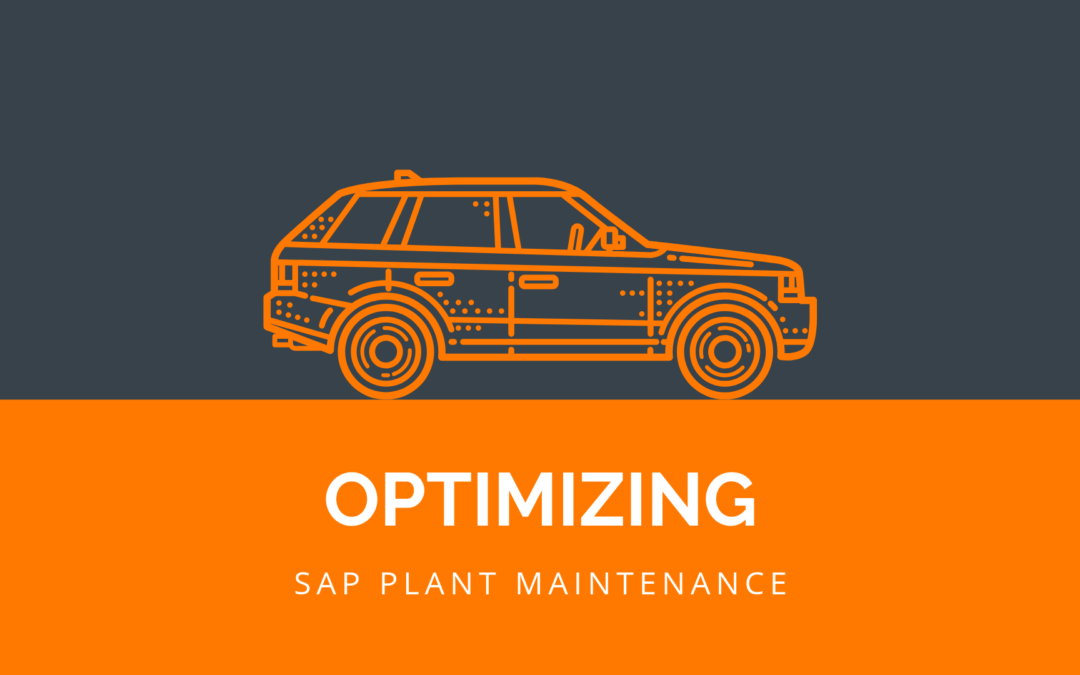For asset-intensive companies, the process of optimizing maintenance without a productivity tool can be an absolute nightmare. This is especially true for those utilizing SAP.
SAP EAM incorporates a large number of maintenance strategies and with that, complex data structures that can overlap, combine, and override each other. These data structures can be mandatory or optional in order for the chosen maintenance strategy to run smoothly.
With the complexity that SAP Plant Maintenance (PM) brings with it, it is important to have a clear understanding of the functions discussed below and how to optimize your maintenance processes.
Important Maintenance Terminologies/Functions
Maintenance Strategy: a breakdown of any required maintenance activities. It does not include detail on the activity, the object or the date. A strategy can be either time-based (maintenance is scheduled based on the how much time has passed), or performance-based (maintenance is scheduled based on equipment usage).
Maintenance Task Lists: essential for strategy-based maintenance, maintenance task lists include information on maintenance activities, materials required and specific deadlines. They may be object specific or neutral and are otherwise optional for other types of maintenance strategies.
Maintenance Items: include specific activities, objects, and organizational data.
Maintenance Plans: contain maintenance items and determine maintenance dates as well as maintenance call objects.
Deadline Monitoring: automatic and prepares batch jobs. This ensures that maintenance call objects are generated in their required due dates.
Practical Guidance on Maintenance Optimization
1. Adjust your Structure in Accordance to your Maintenance Strategy of Choice
SAP data structures are not only complex, but they also overlap and have inter-relationships. Some are compulsory and some are optional. Furthermore, many are dependent on the maintenance strategy of choice. If Preventative Maintenance (PM) is the strategy chosen, it will require several of the functions explained above, and demands high acceptance among users.
2. Utilize Task Lists when Dealing with Multiple Maintenance Strategies
Within PM strategies, there are many types of maintenance schedules. The most basic one is Single Cycle where maintenance is scheduled on regular intervals, with repetitive tasks. PM Strategies get more complex when they are based upon multiple strategies combined, or where one strategy supersedes another.
As an example, consider a scenario in which time-based and condition-based maintenance are both implemented and must combine smoothly to optimize maintenance schedules. This optimization will require a mandatory task list. A Multiple Counter Plan will determine the date based on how much time has passed, or perhaps the condition of the equipment. Here a maintenance task list, though optional, may be very helpful.
3. Avoid Maintenance Overscheduling
When scheduling maintenance, it is important to be thorough so that repairs are done when required. To take this one step further, in order to truly Optimize Maintenance Scheduling, you need to be cautious of overscheduling. Too much maintenance can increase costs to a point where it is no longer effective at decreasing the cost of reactive maintenance such as repairs or unplanned downtime.
Since maintenance strategies and data structures can overlap, it can be beneficial to implement a Maintenance Package Hierarchy. In doing so, this prioritizes maintenance packages that are scheduled for the same day, so that work is prioritized, and unnecessary maintenance can be avoided. If maintenance plans are Performance-Based, scheduling will require constant input and supervision. Time-Based plans have automatic scheduling so whenever possible, they should be prioritized over performance-based maintenance.
Conclusions
As discussed above, optimizing SAP PM is a difficult task. We understand this and are always here to help. Contact us to learn more about maintenance optimization and how we can help simplify the process. At the end of the day, optimization means timely maintenance and increased wrench time which translates into significant improvements to your bottom line.
Share this article

